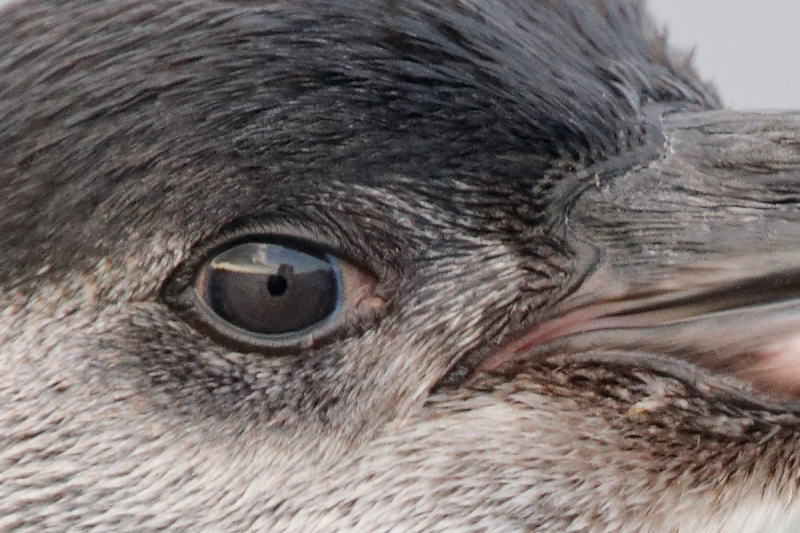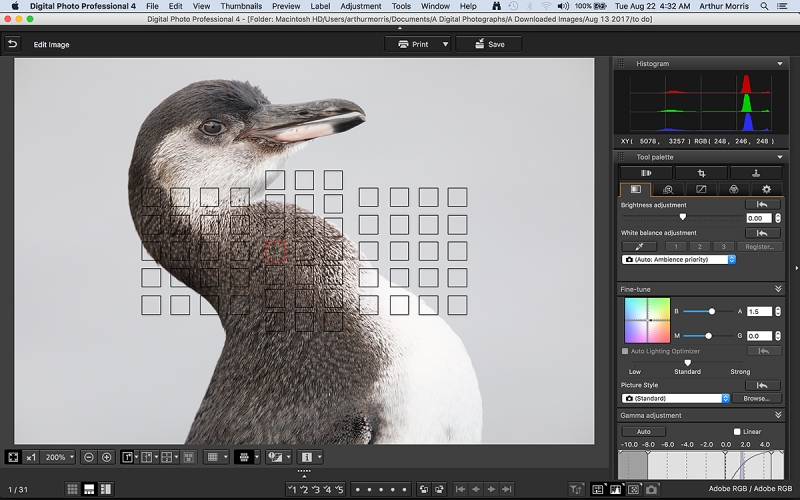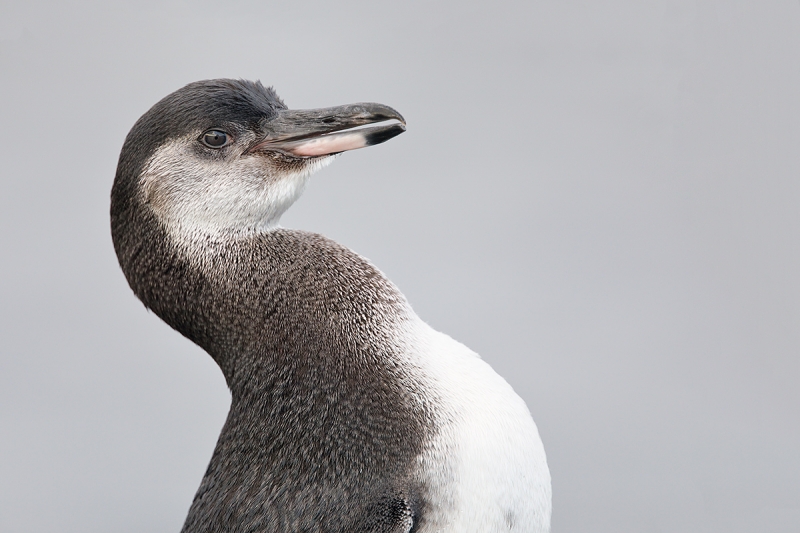What’s Up?
On Saturday, I finally started work on my 2016 Federal tax return. I did lots of stretching and core exercises and enjoyed an afternoon half-mile swim. I met Jennifer, Erik, Sam, and Maya in town at 6pm where we enjoyed dinner at Crazy Fish to celebrate Sam’s heading to Boston with Jen on Monday to begin college at Emerson. He is in the film program. Good luck Sam!
The Streak
Today marks thirty-four days in a row with a new educational blog post. This one took about 2 1/2 hours to create. With all of my upcoming free time, the plan now is to break the current record streak of (I think) four hundred eighty something … Good health and good internet connections willing.
Everybody’s Doing It…
Everybody’s buying and selling used gear on the BAA Used Gear Page. Sales recently have been through the roof. Selling your used (or like-new) photo gear through the BAA Blog or via a BAA Online Bulletin is a great idea. We charge only a 5% commission. One of the more popular used gear for sale sites charged a minimum of 20%. Plus assorted fees! Yikes. They recently folded. And eBay fees are now in the 13% range. The minimum item price here is $500 (or less for a $25 fee). If you are interested please e-mail with the words Items for Sale Info Request cut and pasted into the Subject line :). Stuff that is priced fairly–I offer free pricing advice, usually sells in no time flat. In the past few months, we have sold just about everything in sight. Do know that prices on some items like the EOS-1D Mark IV, the old Canon 500mm, the EOS-7D, and the original 400mm IS DO lens have been dropping steadily. Even the prices on the new 600 II and the 200-400 with Internal Extender have been plummeting. You can see all current listings by clicking here or by clicking on the Used Photo Gear tab now on the the left side of the second yellow-orange menu bar at the top of each blog post.
Booking.Com
I could not secure the lodging that I needed for the UK Puffins and Gannets IPT in Dunbar, Scotland, so I went from Hotels.Com to Booking.Com and was pleasantly surprised. I found the rooms that I needed with ease at a hotel that was not even on Hotels.Com, and it was a nice hotel that I had seen in person. And the rates were great. If you’d like to give Booking.Com a shot, click here and you will earn a $25 reward.
Thanks to the many who have already tried and used this great service.
Revamped
I recently updated the IPT page. If you doubt that I am really slowing down, click here to see the meager IPT schedule. Right now there are only two US-based IPTs on the schedule. Best news is I now have two folks registered for the Fort DeSoto IPT so that will run. Do consider joining us if you would like to learn from the best.
Photographers Wanted
If you would like to learn to be a better bird photographer in person, consider joining me on either the Fort DeSoto IPT in late September or the San Diego IPT in January, 2018. With two folks signed up, DeSoto will offer practically private instruction. And you can tack on the In-the-Field/Meet-up Workshop Session on the morning of Tuesday September 26, 2017 for free. Scroll down for details. Click here for complete IPT info and the current but abbreviated schedule.


Gear Questions and Advice
Too many folks attending BAA IPTs and dozens of folks whom I see in the field, and on BPN, are–out of ignorance–using the wrong gear especially when it comes to tripods and more especially, tripod heads… Please know that I am always glad to answer your gear questions via e-mail.
Please Don’t Forget …
As always–and folks have been doing a really great job for a long time now–please remember to use the BAA B&H links for your major and minor gear purchases. For best results, use one of our many product-specific links; after clicking on one of those you can continue shopping with all subsequent purchases invisibly tracked to BAA. Your doing so is always greatly appreciated. Please remember: web orders only. And please remember also that if you are shopping for items that we carry in the BAA Online Store (as noted in red at the close of this post below) we would of course appreciate your business.
|
|
This is a 100% crop of an ISO 1600 image |
No Noise at ISO 1600
Above is an unsharpened 100% crop of the optimized TIFF. I did not need to run NeatImage on this photo. The only noise reduction applied was during the RAW conversion in DPP 4 where I used Arash’s values for Luminance and Chrominance noise as per the DPP 4 RAW Conversion Guide. Note the complete absence of noise in the iris where it is often evident. I am not seeing any chrominance noise at all. And I am not seeing any luminance noise anywhere. Are you?
|
|
DPP 4 Screen CaptureBe sure to click on the image so that you can read the fine print and see the detail in the Color Fine Tune box. |
Why No Noise at ISO 1600?
The way to reduce noise at any ISO is to expose to the right. Note the RGB values with the cursor placed on the brightest part of the penguin’s breast: R = 248, G = 246, B = 248. Note that on the left side of the histogram, the dark tones are a proverbial mile away from the left-hand axis. In contrast, the light tones on the right are nearly up against the right-hand axis. With regards to the Color Fine Tune box, the WHITEs in the RAW file were a bit blue so I clicked on a spot away from BLUE to better line up the ends of the RGB histogram.
Knowing that I was using a relatively high ISO and that I wanted to minimize the noise in the dark tones, I pushed the exposure farther to the right that I usually do.
|
|
|
This image was created on our late afternoon panga (zodiac) cruise at Punta Morena on August 13. I used the hand held Canon EF 400mm f/4 DO IS II USM lens, the Canon Extender EF 1.4X III, and my favorite penguin camera body, the Canon EOS 5D Mark IV. ISO 1600. Evaluative metering +3 stops off the gray sky: 1/800 sec. at f/5.6 in Manual mode. AWB. LensAlign/FocusTune micro-adjustment: zero. One AF point to the left of the center AF Point/AI Servo/Expand/Shutter button AF as originally framed was active at the moment of exposure. The selected AF point was placed on the side of the bird’s neck just this side of the plane of the bird’s eye. Click on the image to see a larger version. Galapagos Penguin, immature, head and shoulders portrait |
Why I Took the 400mm f/4 IS DO II Lens to the Galapagos/Part I
Though the 100-400 II counterfeits the 400 DO II to some degree — I use it often with the 1.4X TC –I took the 400 DO II on the trip for three main reasons:
- 1: to use on the panga (zodiac) photo outings where the additional stop of speed would often come in handy by allowing me to work at a lower ISO. Had I been using the 100-400 II/1.4X III TC combo I would have needed to be at ISO 3200.
- 2: to use in low light flight situations.
- 3: as a long lens back-up in case I dropped my 500 II into the ocean or in case it was otherwise damaged or disabled.
As things turned out, I used my 100-400 II at least 75% of the time on the trip, very often with the 1.4X III TC. I used the 500 II about 15% of the time, only rarely with the 2X III TC. And I used the 400 DO II less than 10% of the time, never with 2X III TC.
To reduce the weight of my Think Tank roll aboard on the way home, I packed the 400 DO II in one of my two checked bags. It was well padded with dirty laundry inside the Think Tank Glass Limo. And the whole thing was wrapped by my terry cloth travel robe. It survived the journey quite well. If you ever opt to take this route, do so at your own risk.
Final Thoughts
Understand that the skill of the zodiac driver is paramount to the success of all panga photo sessions. Both Juan and apprentice guide Jimmy consistently got the zodiacs into perfect position by hook or by crook, often being able to stabilize the craft using a variety of techniques.
Note that I added canvas above and in front of the bird. I used John Haedo Content Aware fill as detailed in the BIRDS AS ART Current Workflow e-Guide (Digital Basics II), an instructional PDF that is sent via e-mail. Learn more and check out the free excerpt in the blog post here. Just so you know, the new e-Guide reflects my Macbook Pro/Photo Mechanic/DPP 4/Photoshop workflow. Do note that you will find the RGB Curves Adjustment Color Balancing tutorial only in the new e-guide. Note: folks working on a PC and/or those who do not want to miss anything Photoshop may wish to purchase the original Digital Basics along with DB II while saving $15 by clicking here to buy the DB Bundle.
You can learn how and why I and other discerning Canon shooters convert nearly all of their Canon digital RAW files in DPP 4 using Canon Digital Photo Professional in the DPP 4 RAW conversion Guide here. And you can learn advanced Quick Masking and advanced Layer Masking techniques in APTATS I & II. You can save $15 by purchasing the pair. Folks can learn sophisticated sharpening and (NeatImage) Noise Reduction techniques in the The Professional Post Processing Guide by Arash Hazeghi and yours truly.
If In Doubt …
If in doubt about using the BAA B&H affiliate link correctly, you can always start your search by clicking here. Please note that the tracking is invisible. Web orders only. Please, however, remember to shoot me your receipt via e-mail.
|
Obviously folks attending the IPT will be out in the field early and stay late to take advantage of sunrise and sunset colors. The good news is that the days are relatively short in October. Click on the composite to enjoy a larger version. |
The Fort DeSoto 2017 Fall IPT/September 22 (afternoon session) through the full day on September 25, 2017. 3 1/2 FULL DAYs: $1649. Limit 8/openings 6.
Fort DeSoto, located just south of St. Petersburg, FL, is a mecca for migrant shorebirds and terns in fall. There they join hundreds of egrets, herons, night-herons, gulls, and terns who winter on the T-shaped peninsula that serves as their wintering grounds. With luck, we may get to photograph two of Florida’s most desirable shorebird species: Marbled Godwit and the spectacular Long-billed Curlew. Black-bellied Plover and Willet are easy, American Oystercatcher almost guaranteed. Great Egret, Snowy Egret, Great Blue Heron, and Tricolored Heron are easy as well and we will almost surely come up with a tame Yellow-crowned Night-Heron or two. We should get to do some Brown Pelican flight photography. And Royal, Sandwich, Forster’s, and Caspian Terns will likely provide us with some good flight opportunities as well. Though not guaranteed Roseate Spoonbill and Wood Stork would not be unexpected.
Folks who sign up for the IPT are welcome to join us on the ITF/MWS on the morning of Tuesday, September 26 as my guest. See below for details on that.
On the IPT you will learn basics and fine points of digital exposure and to get the right exposure every time after making a single test exposure, how to approach free and wild birds without disturbing them, to understand and predict bird behavior, to identify many species of shorebirds, to spot the good situations, to choose the best perspective, to see and understand the light, and to design pleasing images by mastering your camera’s AF system. And you will learn how and why to work in Manual mode (even if you’re scared of it).
There will be a Photoshop/image review session after lunch (included) each day. That will be followed by Instructor Nap Time.
The best airport is Tampa (TPA). Register soon so that you can be assured of a room at the IPT hotel.
A $500 deposit is due when you sign up and is payable by credit card. Balances must be paid by check after you register. Your deposit is non-refundable unless the IPT sells out with ten folks so please check your plans carefully before committing. You can register by calling Jim or Jennifer during weekday business hours at 863-692-0906 with a credit card in hand or by sending a check as follows: make the check out to: BIRDS AS ART and send it via US mail here: BIRDS AS ART, PO BOX 7245, Indian Lake Estates, FL 33855. You will receive a confirmation e-mail with detailed instructions, gear advice, and instructions for meeting on the afternoon of Friday, September 22.
|
Fort DeSoto in fall is rich with tame birds. All of the images in this card were created at Fort DeSoto in either late September or early October. I hope that you can join me there this October. Click on the composite to enjoy a larger version. |
BIRDS AS ART In-the-Field/Meet-up Workshop Session (ITF/MWS): $99.
Join me on the morning of Tuesday September 26, 2017 for 3-hours of photographic instruction at Fort DeSoto Park. Beginners are welcome. Lenses of 300mm or longer are recommended but even those with 70-200s should get to make some nice images. Teleconverters are always a plus.
You will learn the basics of digital exposure and image design, autofocus basics, and how to get close to free and wild birds. We should get to photograph a variety of wading birds, shorebirds, terns, and gulls. This inexpensive afternoon workshop is designed to give folks a taste of the level and the quality of instruction that is provided on a BIRDS AS ART Instructional Photo-tour. I hope to meet you there.
To register please call Jim or Jennifer during weekday business hours at 863-692-0906 with a credit card in hand to pay the nominal non-refundable registration fee. You will receive a short e-mail with instructions, gear advice, and meeting place at least two weeks before the event.
|
BAA Site Guides are the next best thing to being on an IPT. |
Fort DeSoto Site Guide
Can’t make the IPT? Get yourself a copy of the Fort DeSoto Site Guide. Learn the best spots, where to be when in what season in what weather. Learn the best wind directions for the various locations. BAA Site Guides are the next best thing to being on an IPT. You can see all of them here.




Please Remember to use my Affiliate Links and to Visit the New BAA Online Store 🙂
To show your appreciation for my continuing efforts here, we ask, as always, that you get in the habit of using my B&H affiliate links on the right side of the blog for all of your photo and electronics purchases. Please check the availability of all photographic accessories in the New BIRDS AS ART Online Store, especially the Mongoose M3.6 tripod head, Wimberley lens plates, Delkin flash cards and accessories, and LensCoat stuff.
As always, we sell only what I have used, have tested, and can depend on. We will not sell you junk. We know what you need to make creating great images easy and fun. And please remember that I am always glad to answer your gear questions via e-mail.
I would of course appreciate your using our B&H affiliate links for all of your major gear, video, and electronic purchases. For the photographic stuff mentioned in the paragraph above, and for everything else in the new store, we, meaning BAA, would of course greatly appreciate your business. Here is a huge thank you to the many who have been using our links on a regular basis and those who will be visiting the New BIRDS AS ART Online Store as well.
Amazon.com
Those who prefer to support BAA by shopping with Amazon may use the logo link above.
Amazon Canada
Many kind folks from north of the border, eh, have e-mailed stating that they would love to help us out by using one of our affiliate links but that living in Canada and doing so presents numerous problems. Now, they can help us out by using our Amazon Canada affiliate link by starting their searches by clicking here.
Be sure to like and follow BAA on Facebook by clicking on the logo link upper right. Tanks a stack.
Typos
In all blog posts and Bulletins, feel free to e-mail or to leave a comment regarding any typos or errors. Just be right :).




















My cousin attended Emerson many years ago. So did The Fonze(Henry Winkler)
Illustrates the extreme importance of proper exposure. I’ve had ISO 5000 images from the 5d4 show little to no noise when exposing to the right. I’m using your guide and utilize Arash’s lum/chrom 1dx2 settings for my 5d4 images.